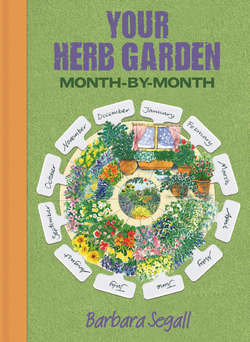Читать книгу Your Herb Garden - Barbara Segall - Страница 54
На сайте Литреса книга снята с продажи.
SAGE
Оглавление(Salvia officinalis – Labiatae)
Sage leaves bring delicious flavours to cold and cooked food. Grow sage for its range of leaf colour, flowers and aroma.
| type | Hardy evergreen sub-shrub |
| flowers | Usually small pink to mauve flowers, though in some forms white or red. Late spring to summer |
| leaves | Depending on species or variety, silvery-green to pink and purple, textured and aromatic |
| height | 60cm (24in) |
| spread | 45cm (18in) |
| planting | Plant in spring or autumn. Grow in containers indoors in winter |
| position | Full sun, good air circulation |
| soil | Prefers a light, dry, well-drained alkaline soil |
| care | If growing for leaves, cut out flower stems. After flowering, cut back spent flower stems. Trim regularly to keep compact and encourage new shoots. Mulch in winter and protect plants in heavy, damp soil. Replace with new plants after five years |
| propagation | Take cuttings spring to mid-autumn and root in a heated propagator. Sow seed indoors in spring. Alternatively, layer sage branches by pinning down side shoots and covering with soil. They take about eight weeks to root. |
| species and varieties | Purple or red sage (Salvia o. ‘Purpurascens’) has dark purple leaves. S.o. ‘Tricolor’ is variegated purple with light pinky-white splashes. Golden variegated sage (S.o. ‘Icterina’) has yellow and green leaves and a mild flavour. Spanish sage (S. lavandulifolia) has a balsamic flavour. Pineapple sage (S. elegans) has pineapple-flavoured leaves |
| harvest | Broad-leaved sages are at their best before flowering or in summer. To keep colour well the leaves need a long, slow drying period. Freeze sage leaves in plastic bags in small quantities |
| herbal value | Astringent qualities are good in steamy baths. Sage leaves are often used in stuffings, cooked meat dishes, salads and for flavouring vinegars |
Sage
